A reader recently asked me where he should stock up on miscellaneous electronic parts, and asked about buying grab-bags from various surplus stores. What follows is spurred by my reply to him.
I have so much stuff that I’ve taken apart and that’s waiting to be taken apart that I hardly ever buy components, at least not common components for breadboarding and prototyping. I’ve never been that interested in buying grab-bags, because I can do just as well taking stuff apart for free.
Is it really economical to salvage parts for “free” that you can buy for pennies? It depends on your perspective, but for me there are two main factors:
- Having a wider assortment of parts on hand, ready to grab when I’m in the middle of a project, than I would choose to order and stock up from a catalog
- A sense of responsibility to save perfectly reusable components from going into the landfill
Criteria
So with the goal of getting through-hole parts that are easy to experiment with on a breadboard, let’s look at a few common items and what you can salvage from them. All of this is stuff you should be able to get for free by letting friends and coworkers know that you’re willing to haul it away for them. Everything here is completely salvageable even after it’s broken, so there’s no point in shopping even garage sales when you get can dead ones for nothing.
Other places will tell you how to salvage cassette players for motors, but I’ll leave that for the BEAM electronics guys. I’m talking about stocking up on the basics that you’ll use in every circuit you breadboard, particularly resistors, capacitors, and diodes.
Of course you can salvage anything you get your hands on — digital clocks, cordless telephones, car stereos — but this is what you specifically want to look for to stock your parts bin.
Whatever you salvage, please set out the metal frames and plastic cases for recycling, if your community has facilities available.
Good Stuff for Salvage
My best suggestion, based on how easy they are to come by, is dead CRT computer monitors. They have mostly through-hole components, including a lot of resistors and small-signal diodes, a fair number of capacitors, a few pots and pushbutton switches, and a handful of TO-92 transistors that you can use for basic switching if you have a transistor checker to identify the pins.
Be sure to discharge the anode cap to the frame at least twice with a couple of big screwdrivers before disconnecting it. Also short large capacitors in the power supply — whatever broke in the monitor may have left no path for the caps to drain.
Dot-matrix impact printers have lots of resistors, maybe a couple of stepper driver chips if you’re lucky, and most likely a bunch of high-power (5A) FETs that ran the printhead, maybe with TTL-compatible FET driver chips. Also one or two large electrolytic capacitors in the power supply, if you’re into that kind of thing.
The printhead carriage rods and slides are great for DIY CNC drill/mill machines . . .
Dead PC power supplies have a couple of good bridge rectifiers, some other rectifier diodes, a few medium-sized electrolytic capacitors, and a bunch of one-foot pieces of really nice 18-gauge stranded wire in a miscellany of colors.
They also have power transistors that you won’t be able to find datasheets for (but they have great heat sinks for TO-220 packages) and toroids that you won’t let yourself throw away but will never actually use.
Live PC power supplies, particularly AT and older, make great bench power supplies, as has been noted many other places. Ignore the bit about soldering in a resistor as a dummy load and just strap an old hard drive on top (plugged in, of course).
If you can find external modems the size of a hardback book and kind of boxy, you’ll get a bunch of resistors and capacitors, a handful of indicator LEDs, and a couple of RS-232 line driver/receiver pairs.
Save the RJ-45 jacks before throwing away dead network cards.
Old computer terminals have a bunch of discrete digital logic chips and probably some .1″ headers that are great for terminating fly-cables to plug sensors into your breadboard.
If you’re interested in dabbling in surface-mount work, watch for rackmount network hubs, 10M switches, and 10M fiber media converters. They’ll be old enough that the SMT components are large enough to see and the resistor values large enough to read. They may also have SMT discrete digital logic, PALs and GALs that can be reprogrammed, and SRAMs.
Bad Stuff for Salvage
TVs, VCRs, and stereos are going to disappoint you with monolithic ICs and surface-mount components. An old enough stereo may get you a handful of resistors and capacitors, and save the phono jacks if you’re at all interested in tinkering with audio or video.
Inkjet printers have a couple of motors — maybe stepper, maybe DC — that are fairly strong for their size. All the electronics will be surface-mount, though. Save the wall wart and salvage the corresponding jack if it’s easily removed.
Computer motherboards have been nearly all SMT for quite a while. The battery holder or supercap that preserves the BIOS settings is worth pulling out, and there may be headers/jumpers you can save. If you have a good magnifying glass and room to store the board, set it aside for when you need to find a particular value of SMT resistor.
Dead CD-ROM and hard drives are full of fascinating things, but not that great for basic electronic parts, since they’re all SMT. CD drives have nice geared/pulleyed DC motors for the tray and tiny limit switches nearby to detect when the tray is in or out, plus tiny DC or stepper motors to move the read head sled.
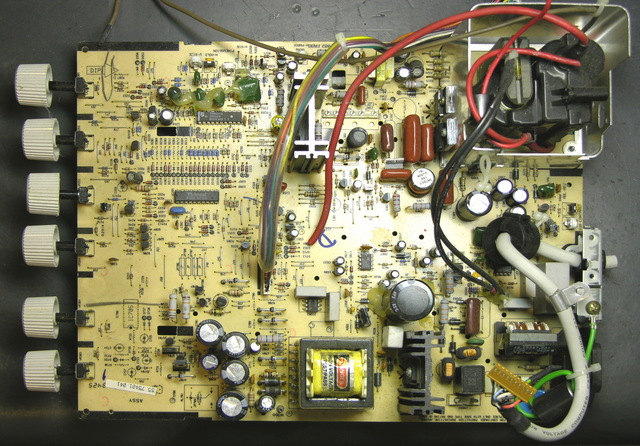
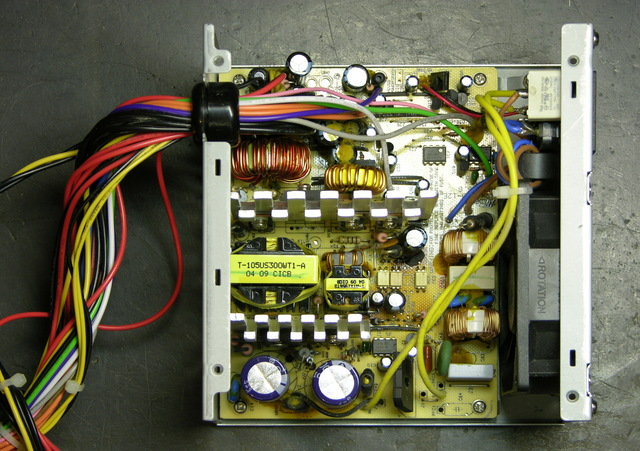
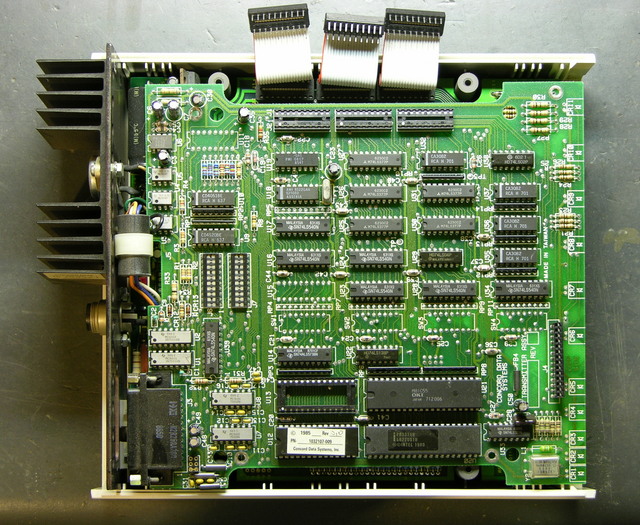
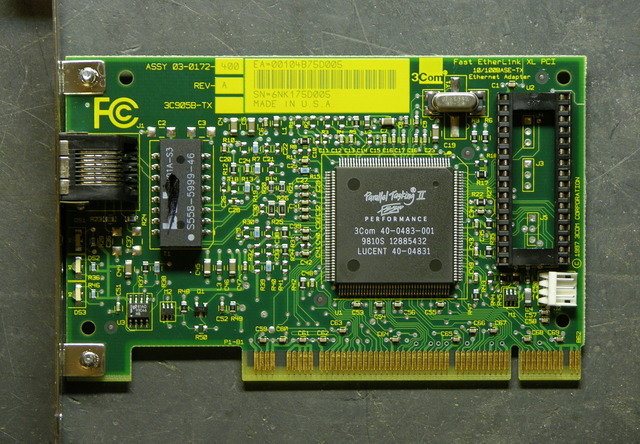
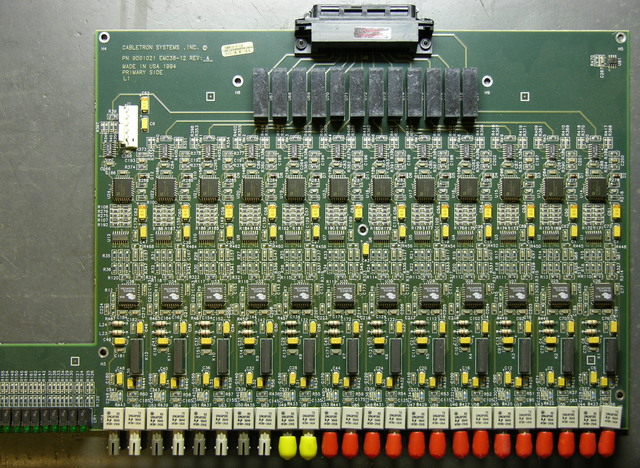
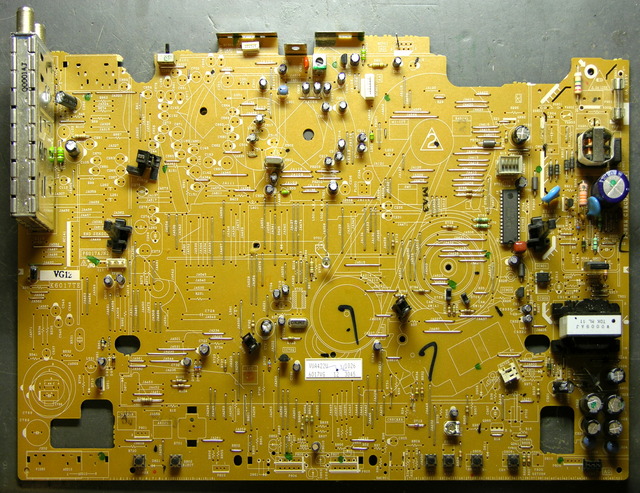
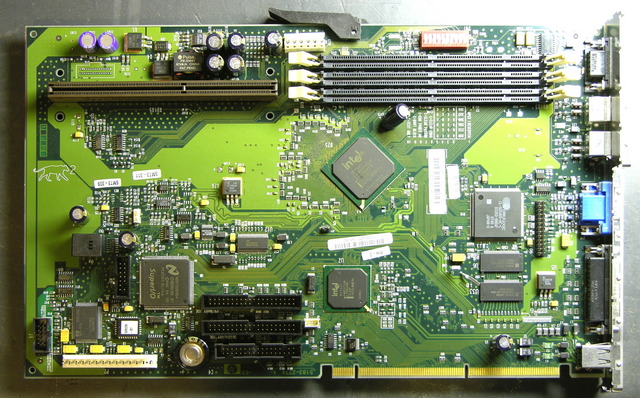
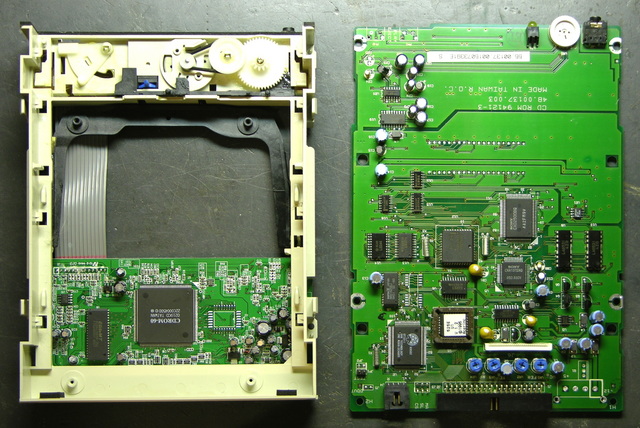
Hmm, interesting subject. I was doing some salvaging just last month…
One problem with salvaging is that most devices have went to surface mount tecnology, which is fine if you’re into prototyping using that. But, quite a few of us still like to prototype with through hole technology (or, even worse, manhattan technology, or even point to point wiring!). Still, you can sometimes still find through hole components (although they usually have short leads, which may or may not be a problem).
As for sources of dead equipment, in addition to getting your friends and cow-orkers to donate their dead stuff, you can occasionally find dead stuff on the side of the road. Also, make friends with the local computer repair shops, and let them know that you’re willing to take some of their dead stuff off their hands (which means that they won’t have to fill their dumpster up with it). Another source might be free-cycle.
In any case, once something has been salvaged, please recycle the remaining parts.
CRT monitors are good for salvage, but beware that stored high voltage charge on the CRT’s aquadaq coating. I’ve seen one that’s been off and unplugged for a week throw a quarter of an inch spark (about 20KV or so!). I’ve also heard stories of technicians throwing mid-sized TVs across a shop involuntarily when zapped by one of those.
Additionally, CRTs present an implosion hazard, so be exceptionally careful around the CRT. The neck is the weakest point, and is prone to being snapped if hit with a tool or arm. And, once cracked, that big empty space sucks in a lot of air, and anything else that happens to be in the vicinity. And, you really don’t want your flesh getting sucked onto a sharp glass edge with that much force. Plus, I’ve heard stories of the tubes imploding catastrophically and throwing glass shards (Safety glasses, gloves, and heavy clothing to cover all skin might not be a bad idea until you’ve gotten the circuit boards out and the tube safely disposed of.).
Dot matrix printers can offer us some nice components. Some of the driver transistors out of some of the ones I’ve salvaged have been darlington pairs. Electrolytic capacitors are nice, especially those from a printer, since they usually have a reasonable voltage rating and reasonable value (and, those things are kind of expensive, too, if you have to actually buy some.).
Finding data sheets on some of the parts is a bit of a trick. Quite a few of the parts only have a house number, which means you’re out of luck. Some of them do have “real” part numbers. http://www.datasheetarchive.com is one option for quickly finding those part numbers.
Dead PC power supplies offer up some useful components, but make sure you check all of the parts before you toss them into your parts bin. Of course, this is true for all salvaged parts, but the parts from a dead PC power supply seem to be especially suspect, since the nature of these circuits means that when one part fails, it seems to take a half dozen other parts with it, and some of the failed parts don’t show any external signs of failure. Also, for those parts that have flamed out, try not to eat or snort (or even wear) the soot.
As for the toroids from a dead PC supply, these are actually somewhat useful. Since a PC supply is a switching type supply which operates up in the many dozens of KHz range, the toroids are moderately useful for the lower end of the RF spectrum (AM BCB, even some of the lower amateur radio bands). Thus, if you need some RF or IF coupling transformers, they can be used.
Also, if you’re into playing with magnetic fields, the toroid cores can be cut to make a split core. The ferrite material is exceptionally hard (and brittle!), but a Carborundum cutting wheel (and lots of patience) will cut it. For the ones I’ve made, I used a Dremel tool with a cutoff wheel.
External modems are getting kind of hard to find now, but you can get some useful parts out of those, too. The case may be the most useful part (given how expensive project boxes have become in recent ages!). Old computer terminals can also yield some useful parts, as well as networking equipment.
While modern TVs are pretty useless for parts, older TVs can supply lots of useful parts. This is especially true if you’re into RF prototyping, where you can use the various IF/RF transformers. But, don’t forget the cautions on the dangers of CRTs from above.
Some of the older inkjet printers can supply useful components, but a lot of the newer ones are highly integrated with SMT components. Part of the trick here is to recognize the age of the device in order to know whether it’s going to be SMT or through hole.
Be careful if you salvage a laser printer. The toner in those things can go everywhere, and is almost impossible to remove.
CRT motherboards are usually highly integrated now, but you can sometimes salvage some memory chips (cache? DRAM? ROM? SRAM?). You can usually also salvage the clock crystal (32,768 Hz usually), which can be useful if you’re into building your own clocks.
I’ll agree that CD-ROMs, DVDs, hard disks, even floppy disk drives don’t have a lot of useful parts, although you can sometimes find an interesting motor or two from some of these. And, just studying the technology can sometimes be interesting (as in “How’d they get all that stuff in that little package?”.
Of course, those of us from the previous generation remember salvaging tube type equipment, including radios and television sets. I remember my first electronics project (during the summer between 6th and 7th grade in school) was made from an AM BCB radio I had salvaged parts from. I rebuilt it as a TRF set (instead of the superhetrodyne that it had been). Of course, I didn’t know a whole lot about resonant circuits back then, so it received about five stations really well…..all at once!
Dave
Older VCRs often have tons of tiny through hole transistors (2SC2785, 2SA1175 typically) in them, also miniature through hole resistors.
Older Ethernet (10base2) NICs also offer BNC jacks, high quality wideband transformers, and a 9V DC/DC converter….
Other than asking for stuff, always remember to check your local goodwill/salvation army store. For example, today I walked in and there was an old oscilloscope on one of the shelves.It was only ten bucks and it has thirteen vacuum tubes and a whole lot of other stuff.
I used to save just about everything I could get my hands on, but now I see little point in salvaging basic components like resistors, capacitors and the like. Large lab kits of them can be purchased on Ebay or webshops for very little money, and you get them all categorized by size. When I have a project on my mind I don’t have time or patience to hunt through the scrap box for a certain resistor value. Motors, mechanics, opto-switches, voltage rectifiers and more specialized components is of more interest though, and salvaging can definately be worth the time with those.
hello looking for a 10 to 15 kva transformer that has 120volt input to build a jacobs ladder.DO you have any good ideas where i could find something that would work for the ladder?
Jamesan, high voltage isn’t my specialty. I think there are good Tesla coil / Jacob’s ladder web sites out there — you should probably check with one of them.
IMHO the best bits so far have come out of old CRTs. The older the better normally makes sense. In the 4 hours it will take to break one down fully, (or less if you are picky) you will salvage about £20 worth of parts. Which is not really worth your time – but you should be spending time looking at the layout, construction techniques used, materials and then hunting down datasheets to find out how the new parts you have found work.
Often asking the “what does this thingy do?” question will result in a practical learning experience only because you found your own answer.
That’s not to say modems and routers/newer stuff is totally useless – strip off just the parts that are easy to are interesting.
My only question today however is how to get rid of the left-over bits and the pool of solder-scraps safely.
Conrad, my town’s curbside recycling facility has indicated that they’re happy to have the PCBs for copper reclamation.
As to the solder scraps, don’t know what to suggest. I don’t actually end up with that much free solder when I “harvest.” Maybe melt it back onto the PCB and let your recycler worry about it? :-/
I am looking for small parts to use in making recyled jewelry. Can you suggest a source for parts under 2 inches in size that could be used for this purpose. I was thinking watch parts, clock parts and computer parts. Any ideas? Where can I get some junk parts like this? Thanks.
Jeanne, I have a number of thoughts for you.
First, almost all salvaged electronic parts, and probably about half of all new parts, contain quite a bit of lead, typically on the surface of the wires, which is exactly where you don’t want it. There are efforts to reduce or eliminate lead in electronics (you may see RoHS on parts — Reduction of Hazardous Substances), but they’re fairly recent and not yet as widespread as they will be in a few more years. If you’re going to make jewelry with these kinds of parts, you may want to have some strategy to deal with the lead. I don’t have a suggestion; I just bring this up so you’re aware of it.
Second, if you’re handy with a heat gun, you can get lots and lots of salvage for free out of discarded computers and printers that people set out at the curb during spring/fall cleanup.
Third, if you can identify particular components that are visually interesting to you, I can certainly suggest sources to find more of them. You can look through my pictures above and point out interesting stuff, or I may be able to point you to other photographs where you can identify things you like.
Fourth, I don’t have much of an idea about watch and clock parts, but I’d suggest asking a jeweler in your area who services watches. He/she may have a steady stream of inexpensive, broken timepieces that people realize they don’t actually want to fix after they learn the cost involved.
Hope this helps, and have fun making stuff!
I have a building full of televisions, vcrs, monitors and various electronic components that was left by a tenant. It is all FREE for the taking, I need it out of the building. If interested, you will need a semi-truck. I can send pictures and give you more details. I am in Marion, Illinois. Need it all out ASAP. 618-922-0454 for more details. email shannonw@swgrafix.com.
Shannon, I couldn’t make the trek to Illinois myself. But if you want to send pictures, I’ll be happy to post it on my front page and see if we can find someone in your area who’s interested. You could also post on Craigslist, and I might be able to hook you up with an electronics club in the area that would be interested.
What’s your time frame for ASAP?
How do you deal with the fact that all of these parts have their leads clipped really short? I’m just getting into electronics and recently decided to take apart an old DVD player for salvage. There were lots of diodes, caps and resistors that looked yummy in there. But after taking a couple of them off the PCB I realized that the leads were way too short to really be of much use. Do you solder on solid core wire to the leads to make them usable on a breadboard?
Steve, short leads usually aren’t a big deal for me. Most resistors and diodes I salvage were installed with a wide enough footprint that I have plenty of lead to re-form to fit the breadboard. Capacitors and mini-relays, yeah, I generally do lap-solder new leads on — saved from clipping leads of new components when assembling kits or my own boards, or just 24-gauge if I’m desperate.
Thanks for the response Keith. That’s pretty much what I figured. In this particular component some of the items have a wide footprint and some don’t. Guess I’ll just stick with the ones that do and the more valuable components.
Something I recently discovered is a roaming box of electronic junk http://www.tgimboej.org , its a chain-letter that’s actually a box full of stuff that can be turned into a project. It works a bit like geo-caching, take something out, put something else back, than mail it onwards again. Recommended if you have lots of useful junk but nothing to do with it.
In the taking apart of a DVD player, I sympathize, after a while you will work out what appliances are likely to yield parts (scan Keith’s blog for more hints), that said, stepper motors are probably useful if you can build a driver, and some are also good generators.
People say we are crazy, but we still do it.
I find the best way to get salvage is to check out the local university’s surplus auction. If you have a big university nearby they will auction our working and non-working electronics. I have seen pallets of misc. CRT monitors go for $10. Worth a look. Cheers.
Old switches and routers always have a nice dc-dc buck converter (step down). You can adjust voltage on these by changing the feedback resistor. These are much better then Chinese aliexpress stuff. Always cut off the piece of pcb where the converter is.